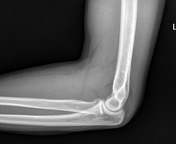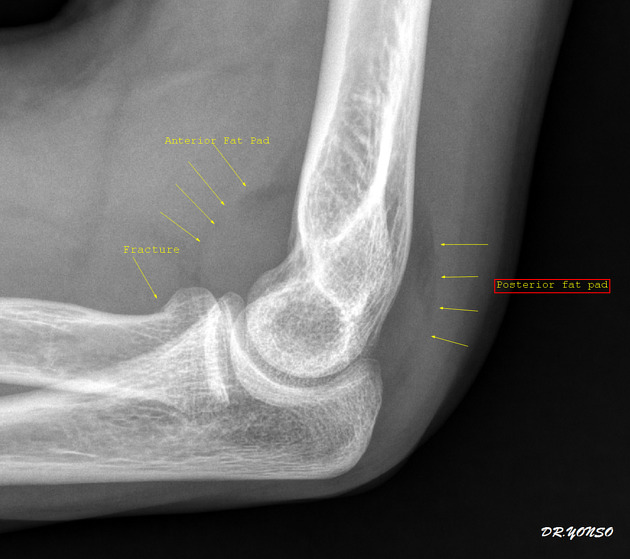Presentation
Slipped and fell this morning with trauma to the left elbow. On examination, tenderness and swelling in the olecranon area, restricted terminal extension.
Patient Data
Age: 30 years
Gender: Male
From the case:
Elbow joint effusion - fat pad sign


Download
Info

- on the lateral view, the anterior fat pad sign (sail sign) and posterior fat pad sign indicate joint effusion.
- non-displaced radial neck fracture.
Download
Info

- on the lateral view, the anterior fat pad sign (sail sign) and posterior fat pad sign indicate joint effusion.
- non-displaced radial neck fracture.
Case Discussion
- presence of a fat pad sign, mostly means there is an intra-articular fracture.
- most common cause of elbow joint effusion in adults is a radial head fracture.
- sometimes the intra-articular fracture may not be visible, at that time it is called an occult fracture, and need further imaging with either MRI, CT or nuclear medicine studies to make the diagnosis.




 Unable to process the form. Check for errors and try again.
Unable to process the form. Check for errors and try again.